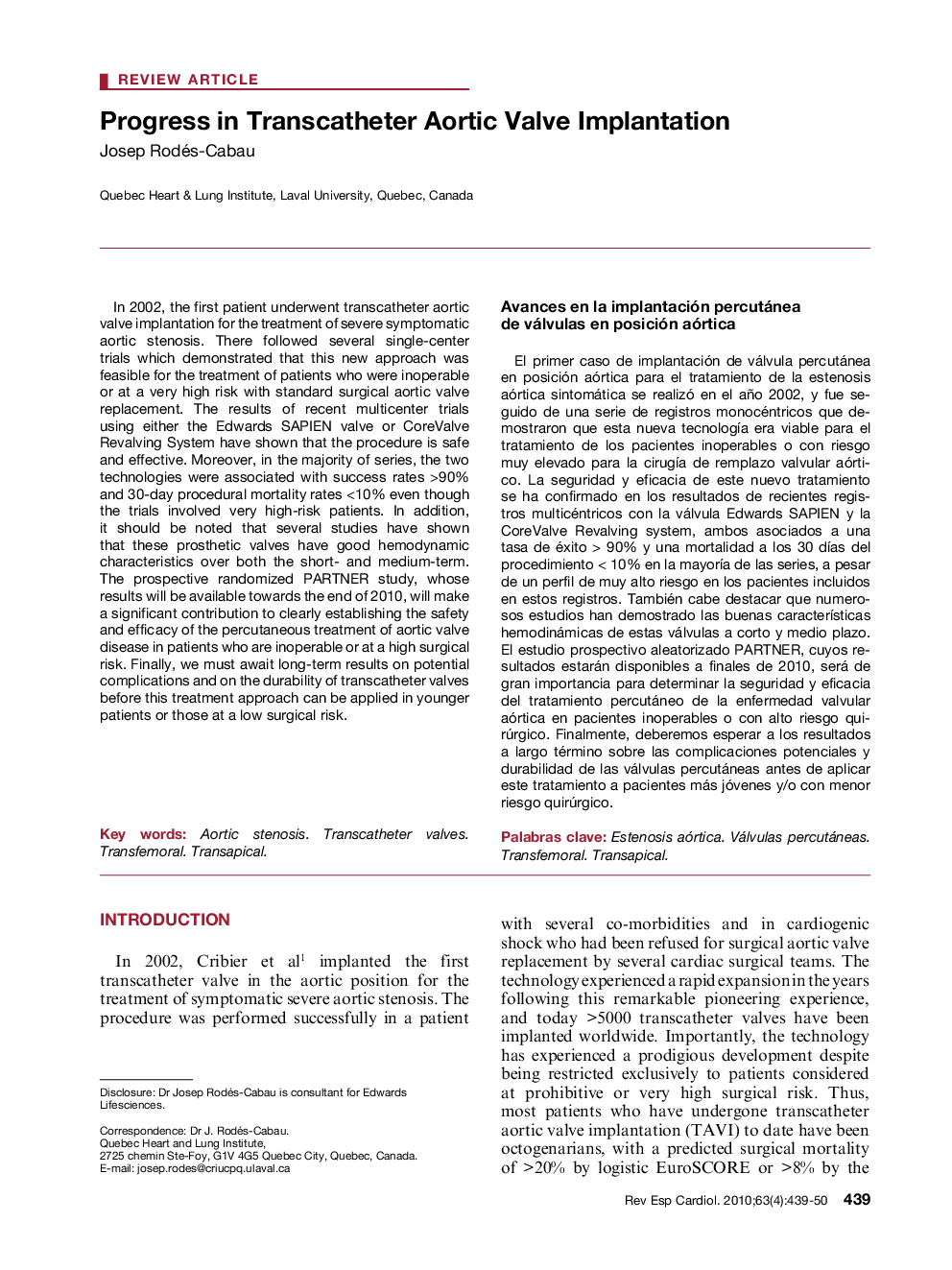| Article ID | Journal | Published Year | Pages | File Type |
|---|---|---|---|---|
| 3017252 | Revista Española de Cardiología (English Edition) | 2010 | 12 Pages |
In 2002, the first patient underwent transcatheter aortic valve implantation for the treatment of severe symptomatic aortic stenosis. There followed several single-center trials which demonstrated that this new approach was feasible for the treatment of patients who were inoperable or at a very high risk with standard surgical aortic valve replacement. The results of recent multicenter trials using either the Edwards SAPIEN valve or CoreValve Revalving System have shown that the procedure is safe and effective. Moreover, in the majority of series, the two technologies were associated with success rates >90% and 30-day procedural mortality rates <10% even though the trials involved very high-risk patients. In addition, it should be noted that several studies have shown that these prosthetic valves have good hemodynamic characteristics over both the short- and medium-term. The prospective randomized PARTNER study, whose results will be available towards the end of 2010, will make a significant contribution to clearly establishing the safety and efficacy of the percutaneous treatment of aortic valve disease in patients who are inoperable or at a high surgical risk. Finally, we must await long-term results on potential complications and on the durability of transcatheter valves before this treatment approach can be applied in younger patients or those at a low surgical risk.
El primer caso de implantación de válvula percutánea en posición aórtica para el tratamiento de la estenosis aórtica sintomática se realizó en el año 2002, y fue seguido de una serie de registros monocéntricos que demostraron que esta nueva tecnología era viable para el tratamiento de los pacientes inoperables o con riesgo muy elevado para la cirugía de remplazo valvular aórtico. La seguridad y eficacia de este nuevo tratamiento se ha confirmado en los resultados de recientes registros multicéntricos con la válvula Edwards SAPIEN y la CoreValve Revalving system, ambos asociados a una tasa de éxito > 90% y una mortalidad a los 30 días del procedimiento < 10% en la mayoría de las series, a pesar de un perfil de muy alto riesgo en los pacientes incluidos en estos registros. También cabe destacar que numerosos estudios han demostrado las buenas características hemodinámicas de estas válvulas a corto y medio plazo. El estudio prospectivo aleatorizado PARTNER, cuyos resultados estarán disponibles a finales de 2010, será de gran importancia para determinar la seguridad y eficacia del tratamiento percutáneo de la enfermedad valvular aórtica en pacientes inoperables o con alto riesgo quirúrgico. Finalmente, deberemos esperar a los resultados a largo término sobre las complicaciones potenciales y durabilidad de las válvulas percutáneas antes de aplicar este tratamiento a pacientes más jóvenes y/o con menor riesgo quirúrgico.
